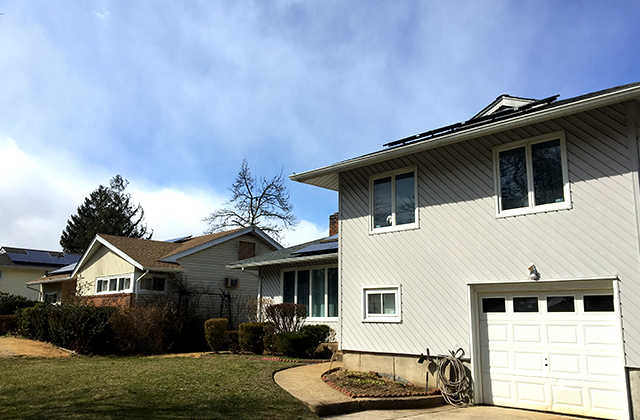Different communities of color are finding options that are making solar power an option for them. Maybe they’re in San Diego. Or southeast Washington. Or Long Island. The energy source is becoming more affordable, especially for low-income residents.
That’s the point of an article The Undefeated published Friday (April 21). Most people in these areas aren’t interested in shifting toward clean energy necessarily; they’re more interested in how the transition will save them money. Low-income families suffer a higher “energy burden” than more affluent households, which means that more of their income goes toward energy bills to heat and light their homes.
The Undefeated writes that the benefits may be simple but go a long away:
The potential savings from solar are significant enough that improvements in quality of life are abundant and instantly come to mind in home after home, from funding college for children to creature comforts and consumer goods that wealthier families take for granted. In their own way, these residents appreciate solar with all the verve of eco-celebrities Johnny Depp, Julia Roberts and Leonardo DiCaprio.
There’s a Latino father in Fresno, California, who was able to send his son to California State University at Fresno after the energy savings started rolling in. Jose Rodriguez lives in a cooperative housing development where 35 of the 42 homes have solar.
“I got my solar at a perfect time,” Rodriguez tells The Undefeated. “With the recession, my boss told me I could only work part-time. I could keep putting my money toward education instead of the bills.”
Then there’s Brownsville, Brooklyn, which suffers from one of the highest crime rates in the New York City borough. An affordable housing development in that neighborhood has roughly 155 homes with solar panels. The Nehemiah Houses may have been built in the 1980s, but it’s ready for the future.
Outside of New Orleans, communities are saving money by taking advantage of the city’s 219 days of sunshine a year. One father, Vien Tran, saves $100 a month now—money he can put toward purchasing things for his kids. “Each one has their own iPad,” he said to The Undefeated. “I’m pretty sure he can use an iPad better than you.”
The nation’s capital, Washington, D.C., is also adopting the technology. The Undefeated describes it as such:
Washington, D.C., has some of the most aggressive renewable electricity goals in the country and a sustainable energy department funded by a surcharge on energy bills. Some of that money has been used to contract for more than 500 no-cost solar installations in the city’s poorest wards over the past four years.
Some of the models that are making this technology more affordable come from committed nonprofit and state partnerships like California’s Single-family Affordable Solar Homes program. The state sets a budgeted amount of money aside to fund solar industry investments in low-income neighborhoods.
Other places, like Brownsville and New Orleans, follow for-profit models which rely on private investment. But these also allow for solar industries to look past credit score and income requirements that state programs may put in place to gain public support. Ideally, any model—for- or nonprofit—removes the upfront costs to install the technology. In these cases, the panels may not belong to homeowners, but they still get reduced energy bills while shrinking their carbon footprint.
National numbers on how many solar panels are being installed in communities of color do not exist, but the technology’s price is dropping dramatically. When panels first became widely available to homeowners around 2007, installation cost upwards of $40,000 on average. Today, it may cost $15,000.
Check out The Undefeated’s complete report here.
